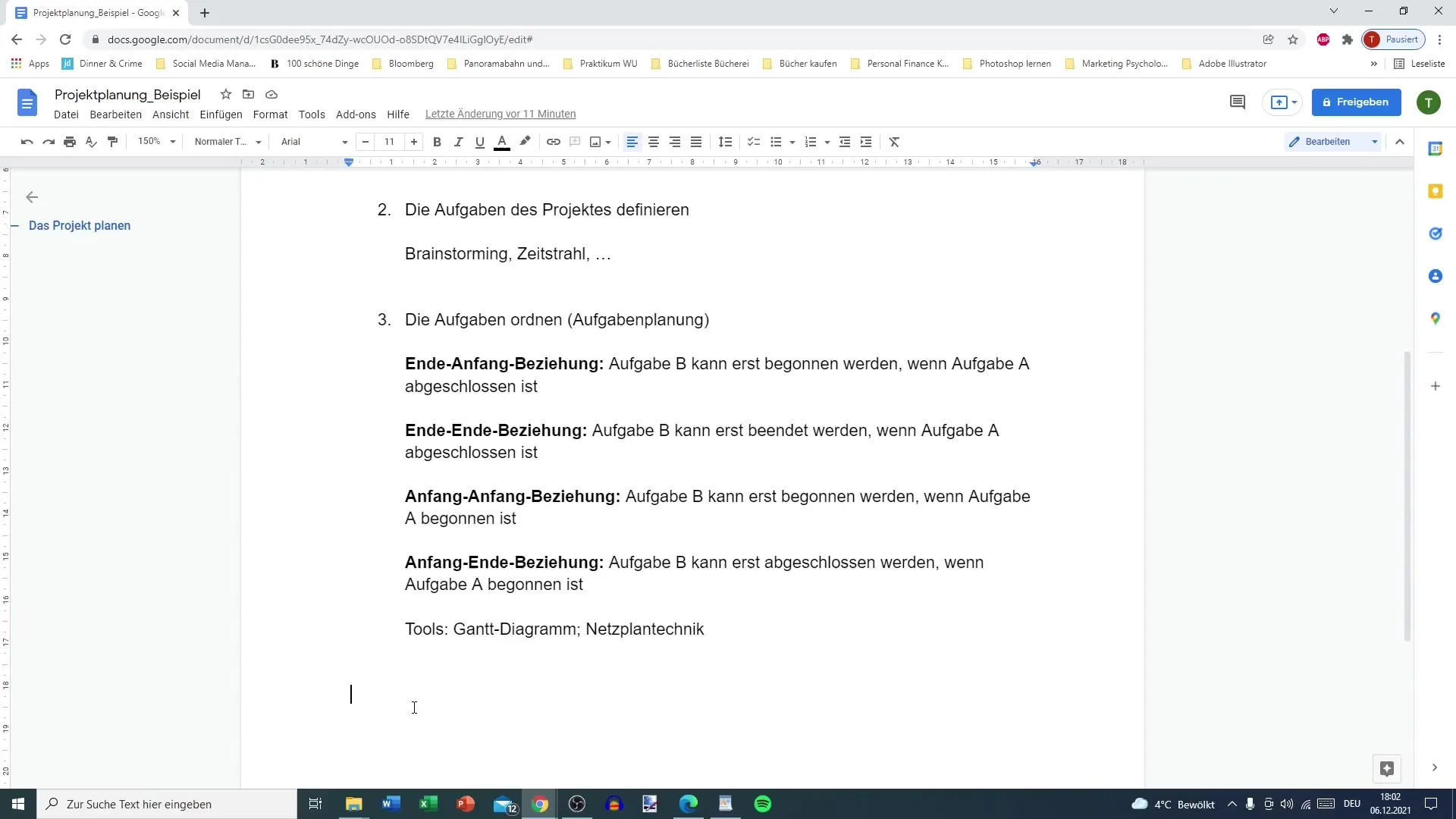Project management requires precise planning to ensure the efficiency and success of projects. A central step in this is the efficient estimation of the duration of each task and the allocation of necessary resources. In this guide, you will learn how to optimally approach the time planning and resource allocation for your project.
Key Insights
- Involve all stakeholders in time estimation.
- Consider legal and organizational buffers.
- Allocate resources clearly and plan task overlaps.
- Create a digital calendar for task distribution.
Step-by-Step Guide
1. Estimate Task Durations
To capture the entire project duration, it's important to realistically estimate the scope of each task. Gather estimates from all project participants to avoid misjudgments. For example, the design may initially be estimated at two weeks, but the graphic designer may indicate that she needs four weeks. Be sure to consult all team members to receive an informed estimate.

2. Account for Legal Reasons and Buffers
In addition to task estimation, organizational and legal stability must also be considered. For example, if approval from an authority is required, this could extend the project duration. It's important to plan for a time buffer to account for any delays. Before finalizing the plan, always be aware that unexpected factors could impact the schedule.
3. Allocate Resources
Once the time planning is done, resource allocation follows. Consider who is responsible for which tasks and plan the necessary resources. You must also take into account the cost per hour for each person as well as clarify overtime policies. Ensure that employees are not simultaneously involved in two tasks to avoid overlaps and necessary extra work.
4. Create a Calendar
Based on the estimated tasks and allocated resources, you should create a calendar. Entering all tasks and deadlines into a central, ideally digital, calendar allows your team to quickly access all relevant information. This increases transparency and improves communication within the team.
5. Incorporate Information into the Calendar
Make the calendar information accessible to all team members so they can track progress at any time. An online platform allows team members to easily incorporate changes and stay informed. This makes planning not only efficient but also flexible.
Summary
In this guide, you have learned how to realistically estimate the duration of each task in a project, consider legal buffers, and allocate resources effectively. With a carefully crafted calendar, you now have the necessary groundwork for successful project planning.
Frequently Asked Questions
How do I involve all team members in planning?Ask all participants for their estimates and experiences. Consider their feedback.
What should I do if deadlines overlap?Ensure task allocation is clear and no conflicts arise in resources.
How important is a digital calendar?A digital calendar provides transparency and allows quick access to information for all team members.


